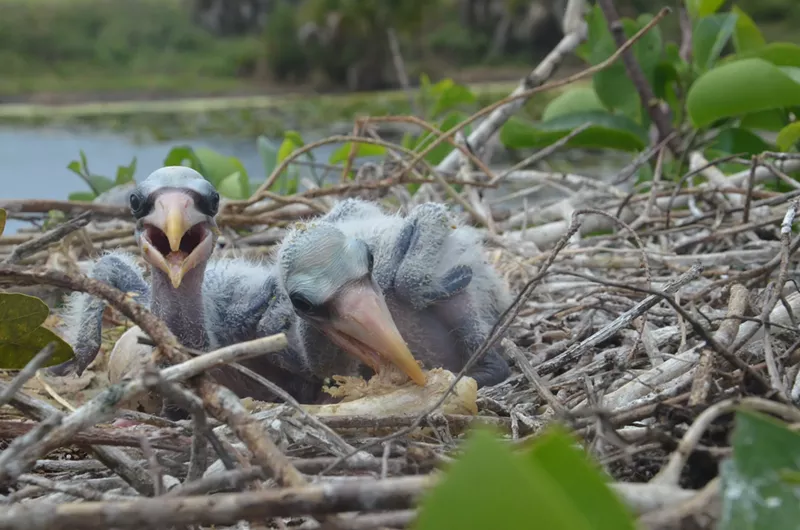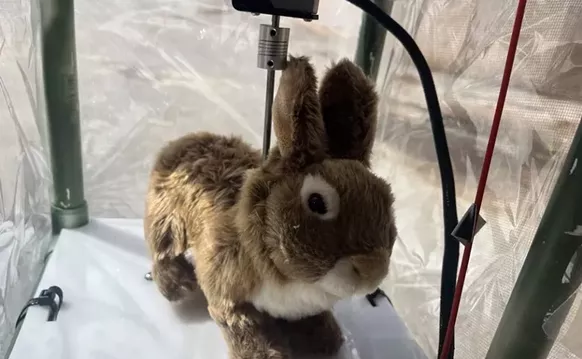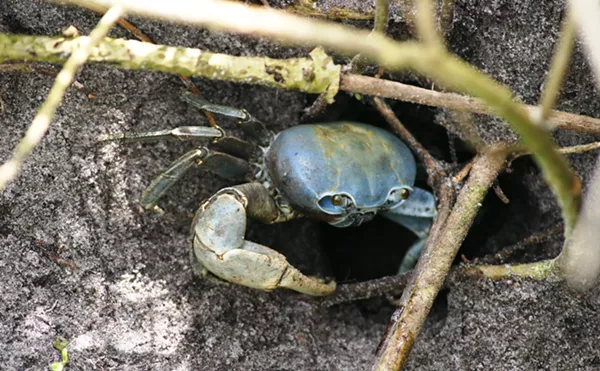Like a college-age guy or a bachelor in the city, a Florida bird species has adapted to survive on a diet of chicken wings, hot dogs, and chicken nuggets.
The wood stork is North America's only native stork, and for many years, it has primarily been found in the wetlands of Florida, including Everglades National Park. But as humans drain and pave over wetlands, habitat destruction has pushed storks as far north as North Carolina and into urban areas of South Florida.
A group of researchers from Florida Atlantic University (FAU) published a study comparing the diets and reproductive ability of wood storks that live deep in the marshes of the Everglades to storks that live along roads like the Ronald Reagan Turnpike and Interstate 95, as well as those that live in cities. They wanted to see if storks in a certain area were doing better than others when their natural food sources were hard to come by.
What they found was unexpected.
"The first human food item we found was a hot dog, though I thought it was a stick. One wood stork chick had half a hot dog, one had the other half, and one had a bun," says Betsy Evans, a natural resource specialist with the Army Corps of Engineers and lead author on the study.
Evans and other researchers found that wood storks in urban areas were eating human food and bringing it home to their chicks. On some occasions, they even ate pasta and pancakes, which are nothing close to anything in the birds' normal diet, according to Evans and her co-author, professor and avian ecologist Dale Gawlik.
Wood storks are wading birds, meaning they walk around in the water of marshes and wetlands, hunting prey including small fish. While herons, another iconic South Florida wading bird, wait for a big fish to come by and then strike, wood storks use what's called "tactile foraging."
"They walk around with their bill in the water and sweep their head back and forth to feel for big groups of small fish," Gawlik tells New Times. "That's a great strategy when groups of prey are really dense, but it doesn't work well when they're scarce."
Gawlik says that wood storks have been particularly sensitive to habitat loss and degradation. As more wetlands disappear, fewer fish are swimming in large groups for the wood storks to feel and catch.
Wood storks were listed as an endangered species in the 1980s, when their population dropped to only 5,000 pairs in the southeast U.S., according to the U.S. Fish and Wildlife Service, which often counts bird populations in pairs to measure their breeding potential. As wood storks have moved further north and into cities, their population has slowly made a comeback and they're now listed as threatened.
During their study, Evans and Gawlik examined stork nests in Palm Beach County, Broward County, and the Everglades from 2015 to 2017 during cycles of what the researchers call "boom and bust." Boom years are years with distinct wet seasons when it rained a lot and dry seasons when it rained very little. These years are good for storks because the fish reproduce greatly during the wet season and then are confined to shallow pools in the dry season for the storks to munch on.
Bust years are either consistently dry or, in the case of 2016, consistently wet. It rained throughout the wet and dry seasons in 2016, meaning there were fewer shallow pools and the storks had far less to eat. Stork colonies deep in the Everglades produced hardly any eggs during bust years because they didn't have food.
But their city-slicker cousins fared better.
"In a bust year, a stork in the urban areas can switch to eating other things, like human foods. It's not the best foods, but it's better than nothing. When marsh storks aren't producing any young, urban storks are producing at least one egg," Gawlik says.
Evans says she found storks all over urban areas carrying away snacks they found or were fed by humans. When storks feel threatened, they regurgitate food they store in their necks to distract predators, so Evans usually found out exactly what they'd been eating as soon as they saw her.
"I found them in Miami in a parking lot where someone was leaving breakfast foods from a Denny's, like pancakes," Evans laughs. "They evolved in this system where you had to be a wide-ranging species."
The FAU study did not determine whether eating greasy human food has long-term negative effects on wood storks, but the researchers are hopeful it could be a good sign for wood stork populations in the future.
"We need to understand how animals are dealing with human modifications to their environments," Gawlik says. "For a rare bird, if you're cleaving off the worst years this way, and you repeat that decade after decade, it could make a big difference."
If eating chicken wings and pancakes are a sign of evolution, there may be hope for some of us yet.

Audio By Carbonatix
[
{
"name": "GPT - Billboard - Slot Inline - Content - Labeled - No Desktop",
"component": "16971022",
"insertPoint": "2",
"requiredCountToDisplay": "2"
},{
"name": "STN Player - Float - Mobile Only ",
"component": "18617832",
"insertPoint": "2",
"requiredCountToDisplay": "2"
},{
"name": "Editor Picks",
"component": "15769925",
"insertPoint": "4",
"requiredCountToDisplay": "1"
},{
"name": "Inline Links",
"component": "16575154",
"insertPoint": "8th",
"startingPoint": 8,
"requiredCountToDisplay": "7",
"maxInsertions": 25
},{
"name": "GPT - Rectangle 2x - Slot Auto-select - Labeled",
"component": "15782206",
"insertPoint": "8th",
"startingPoint": 8,
"requiredCountToDisplay": "7",
"maxInsertions": 25
},{
"name": "Inline Links",
"component": "16575154",
"insertPoint": "8th",
"startingPoint": 12,
"requiredCountToDisplay": "11",
"maxInsertions": 25
},{
"name": "GPT - Leaderboard to Tower - Slot Auto-select - Labeled",
"component": "15782207",
"insertPoint": "8th",
"startingPoint": 12,
"requiredCountToDisplay": "11",
"maxInsertions": 25
}
]












